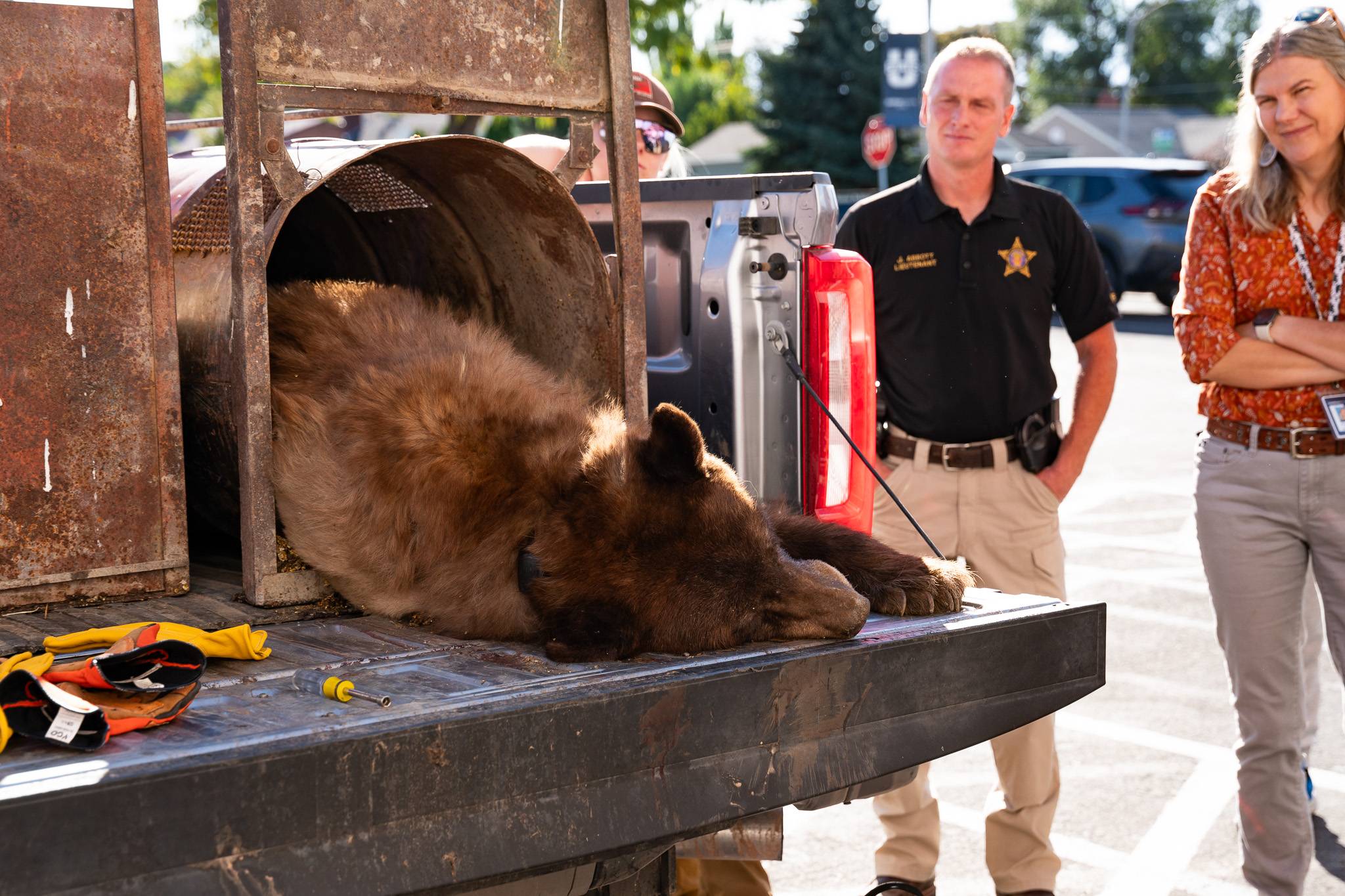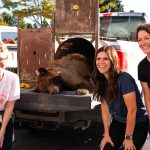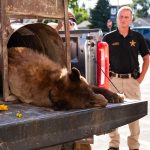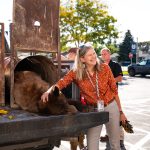USU Eastern Press Release
A black bear cub and its sleeping mom were on Utah State University’s campus in the Reeves parking lot.
Dozens of students surrounded the two bears while taking selfies with the bears and asking Utah Department of Wildlife Resources representatives questions about the two campus guests.
They were found in the town of Green River, Utah, eating watermelon from one of the fields. The mom bear chomped on dozens of watermelons costing the owner $1,000 in profit. The farmer called the DWR to transport the bears to an area where there were not people and not on the watermelon farm.
The momma bear and baby bear were baited into a steel cage in Green River and then transported in the cage to Price. The first attempt to capture the bears was unsuccessful. In the second attempt, DWR captured the momma bear first.
Once the bears were in Price, a tranquilizer gun was used by DWR personnel to put the 200-pound momma bear to sleep when she was still in her steel cage. She is believed to be a teenager about 13-15 years old. Her worn teeth gave the officers an approximate age of the bear. Bears have babies every other year so she was not pregnant and has other full-grown black bears. Her baby cub is thought to have been born in February 2024.
The baby bear was not tranquillized because of its young age and weight.
DWR brought the two bears to the USU Eastern campus for students in Dr. Sunshine Brosi’swildlife classes could add a GPS transmitting collar to the bear and to place an ear tag on the bear. The students looked into its mouth, played with its paws and ran their fingers through its fur. Bears have a bad stench, so students did not stay too long close to them.
Next came out the cell phones to take selfies with the bears.
Word spread on campus about the bears and more and more students came to see the two bears with the mother starting to move and snore.
It was time to put the sleeping bear back into the cage and a student from the Wildlife Programgave it another shot to help her wake up.
DWR wanted the mother bear to be awake when they let her go in the mountains so her cub would follow her into the wilderness.
“The GPS collars provide a lot of information on where the bears travel, when they are active, and when they are in torpor, a shortened hibernation,” said Dr. Brosi. “It is an amazing experience for the Wildlife students to get to practice with putting on ear tags and GPS collars, not too tight but tight enough to last through their winter weight fluctuations,” Dr. Brosi added.
USU Eastern is located in rural Utah where students have opportunities for extensive collaboration with local agencies and to interact safely with the wonderful wildlife that shares our home.




